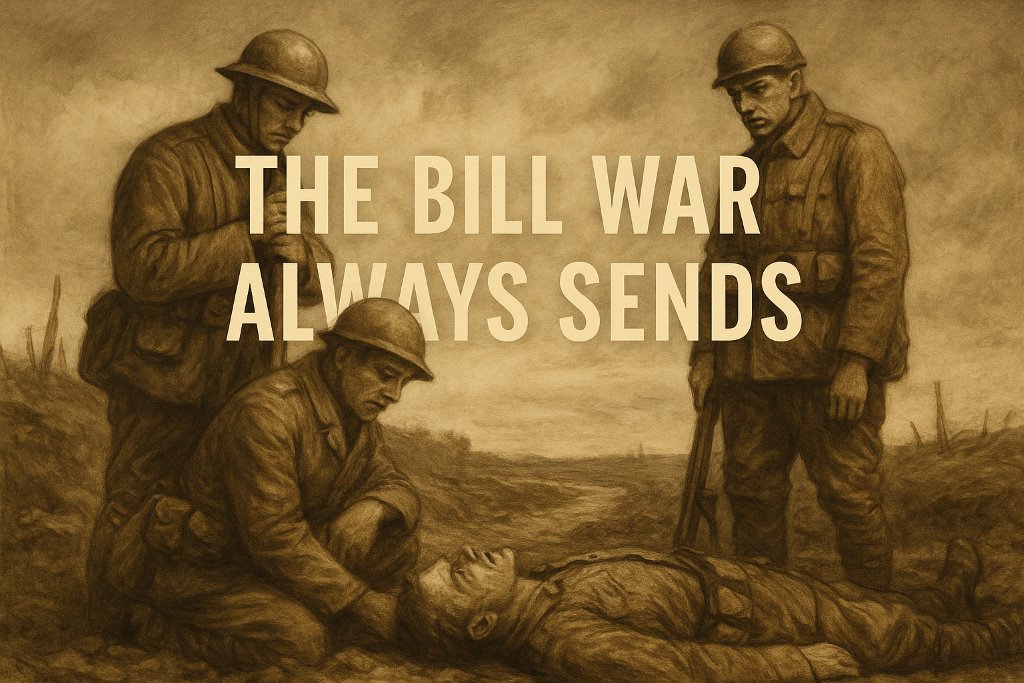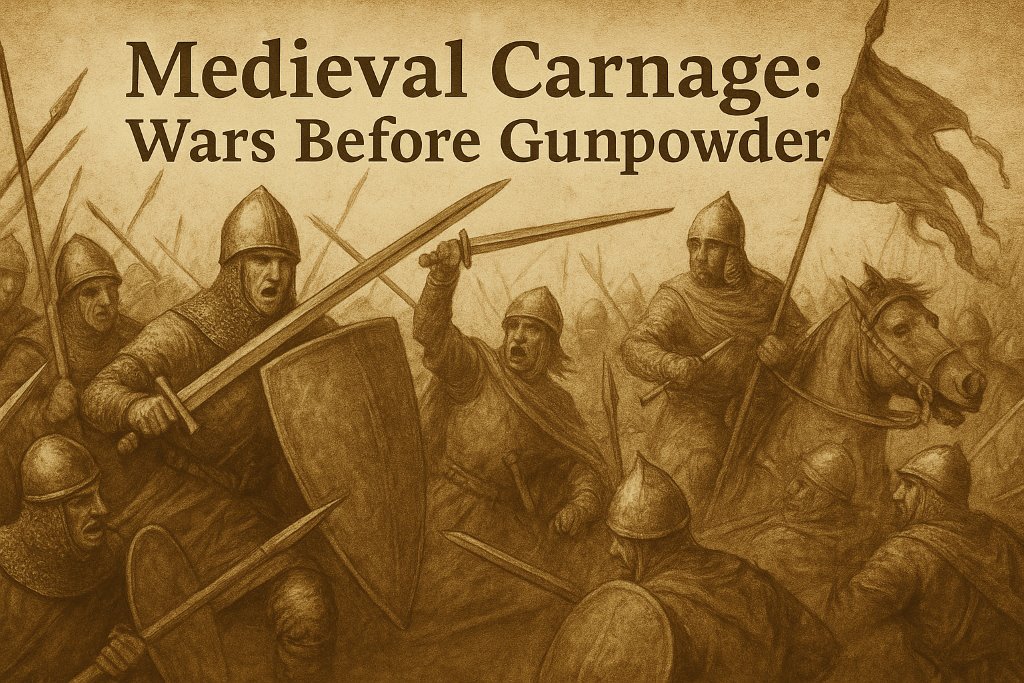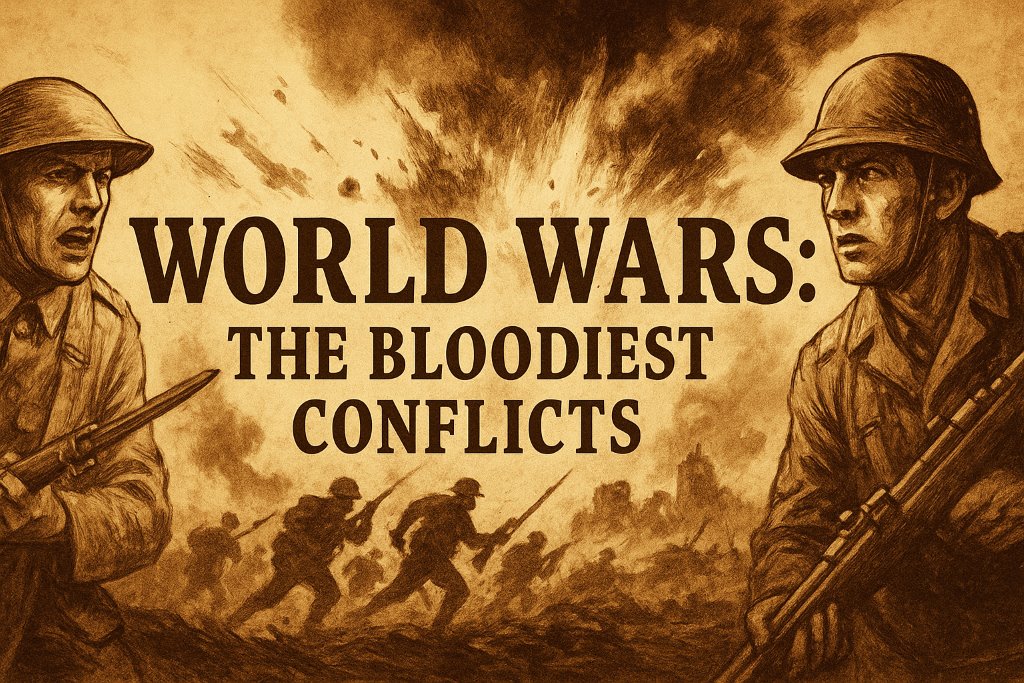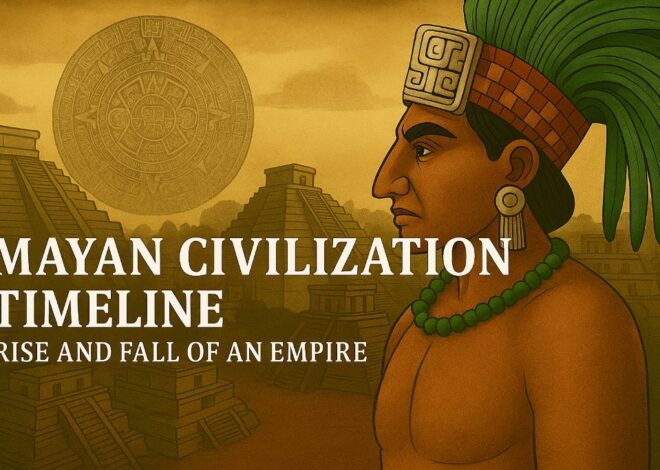
Deadliest Battles in History: Wars That Shaped the World
I try to keep a calm voice when talking about wars, but some numbers don’t let you stay calm. The deadliest battles in history were not just clashes of armies. They were shockwaves that rattled languages, maps, and families for generations. Cities turned to bone-white ruins. Fields stayed quiet for seasons because there was nothing left to harvest or anyone left to harvest it. A single operation could take hundreds of thousands of lives. A siege could grind down a population until memory itself felt tired. I’m not here to glorify any of it. Just to place the events on a page so we can look straight at what they were.
Top 10 Deadliest Battles in History
Lists are blunt instruments, and the records are messy. Death counts mix soldiers and civilians, sometimes spread across weeks or months. Even so, a quick reference helps anchor the scale.
- Stalingrad – 1942 to 1943 – rough total near 2,000,000 killed or wounded – turning point on the Eastern Front.
- Berlin – 1945 – up to 1,000,000 total casualties in weeks – the last convulsion of Nazi Germany.
- Siege of Leningrad – 1941 to 1944 – over 1,000,000 dead, many from starvation – a city refusing to quit.
- Somme – 1916 – more than 1,000,000 killed or wounded – the trench war at full volume.
- Verdun – 1916 – about 700,000 casualties – ten months of endurance and ruin.
- Huaihai Campaign – 1948 to 1949 – Chinese Civil War – estimates in the hundreds of thousands to 1,000,000+ casualties.
- Battle of Wuhan – 1938 – Second Sino-Japanese War – casualties often counted in the high hundreds of thousands.
- Brusilov Offensive – 1916 – technically a campaign – Russian and Central Powers losses near 1,500,000 combined.
- Passchendaele – 1917 – over 500,000 casualties – mud swallowing men and machines.
- Cannae – 216 BCE – 50,000 to 70,000 Romans dead in one day – an ancient template for encirclement.
If that reads like a drum, that’s about right. Now the longer tour.
Ancient World’s Deadliest Battles
Changping – 260 BCE
The Battle of Changping inside a map many of us don’t read often enough. Qin faced Zhao during China’s Warring States era. The fight ended with a Zhao army broken, then surrounded, then gone. Some chronicles speak of mass executions of prisoners. Even if you cut the old figures down, the loss sits at a scale that stuns. You feel the weight of unification arriving not just with reforms and roads, but with pits and silence.
Cannae – 216 BCE
Hannibal drew a huge Roman force forward, bent his line, then wrapped the flanks like a door closing. The Roman army kept shrinking in a tight circle. Speed, dust, and shock did the rest. One of the top 10 deadliest battles in history because destruction came fast, almost surgical, and because the political shock in Rome reshaped policy for years. People still study the diagram like a spell they could cast again. I guess some lessons refuse to retire.
Gaugamela – 331 BCE
Alexander pressed into Persia’s heartland and met Darius III on open ground. The numbers tilt wildly in the texts, and yet the outcome is clear. Persian formations cracked. The court scattered. Alexander’s road to empire opened wider. Casualties on the Persian side were heavy. An empire changing hands doesn’t happen with a light touch.
Teutoburg Forest – 9 CE
Battle of the Tuetoburg Forest – Three Roman legions walked into a wet, wooded ambush and never walked out. Arminius, a Roman-trained Germanic leader, set the trap and kept it tight for days. The losses ended Rome’s push east of the Rhine. You can almost hear the rain on leaves as the shields splinter.
Medieval Carnage: Wars Before Gunpowder
Yarmouk – 636
In the battle of the Yarmouk, Byzantium faced the Rashidun Caliphate near the Yarmouk River. A string of maneuvers, dust storms, and stubborn pushes ended in a rout. The path into the Levant broke open. Sources list huge losses on the Byzantine side. Territory shifts look neat on classroom maps. They don’t feel neat when you stand on a ridge and picture camps, baggage, and families waiting for news that never came.
Hastings – 1066
Numbers are small compared to modern wars, but the outcome was enormous. In the battle of Hastings, Harold fell. The shield wall lost its spine. William and the Normans planted a new ruling class and set England on a different track. Casualties likely in the thousands. Language and law changed more than the headcount suggests.
Grunwald – 1410
Also called Tannenberg. The Teutonic Order faced a coalition of Polish and Lithuanian forces. Heat, massed cavalry, and stubborn infantry work crushed the Order’s core. Tens of thousands fell. The decline of a crusading state began, while new power centers formed around it.
Ain Jalut – 1260
In the battle of Ain Jalut Mamluk cavalry met Mongol detachments in Palestine. The Mongol aura of invincibility took a hit. Losses are hard to fix to a neat figure. The real note is psychological. A limit appeared where there hadn’t been one, and that changes how rulers sleep.
Battles of the Modern Age (1800-1900)
Leipzig – 1813
The Battle of Nations. Multiple days. Multiple armies. A city ringed with smoke and bridges. More than 600,000 soldiers took part. Casualties around 90,000 by many counts. Napoleon’s grip loosened. The Coalition learned that mass plus patience could outweigh his speed. The river carried wreckage for days.
Borodino – 1812
One day outside Moscow and nearly 70,000 killed or wounded. Napoleon held the ground at dusk, yet the road ahead held no easy prizes. The cost did not match the gain. The retreat swallowed far more than the battle had. Sometimes a battlefield isn’t the real graveyard. The road is.
Solferino – 1859
France and Sardinia faced Austria in a hot Italian summer. Around 40,000 casualties in a few hours. The wreckage moved a Swiss businessman, Henry Dunant, to push for a neutral aid society. The red cross on white background came from that day’s shock. Out of a field of broken bodies, a small rule for mercy took shape.
Taiping Rebellion battles – 1850 to 1864
A civil war more than any single fight, but inside it sat engagements that swallowed whole provinces. Cities like Nanjing saw sieges and final storms with terrible tolls. The death total for the conflict runs into the tens of millions. When people say a battle shaped a century, this is what they mean, even if the names don’t show up in Western school notes as often as they should.
World Wars: The Bloodiest Conflicts in the deadliest battles in history
Verdun – 1916
Ten months. A coil of forts, ravines, and shell craters. About 700,000 casualties. French units rotated in and out to keep the line from snapping. The air smelled like chalk and cordite. Even after ammo and fresh troops arrived, the hill lines never went back to what they had been. People talk about nationhood and memory here, and they’re not wrong.
Somme – 1916
Opened to take pressure off Verdun and became its own storm. The first day hit the British army with losses near 60,000. The rest of the months slid by in mud and wire. Over 1,000,000 total casualties by the end. A lesson about planning, maps, and what happens when the ground has opinions.
Brusilov Offensive – 1916
A Russian push that surprised the Central Powers with careful preparation and short, sharp artillery work. Gains at first, then exhaustion. The total butcher’s bill for both sides near 1,500,000. The empire that threw that punch staggered, then fell a year later. Victories can carry their own poison.
Stalingrad – 1942 to 1943
The Volga cut by fire. Blocks taken, then lost, then taken again. Snipers in half-rooms. Cellars turned into fighting pits. Civilian survival became an art that had no rules. When the ring closed around the German Sixth Army, the scale of the defeat made the rest of the war tilt. Casualties near 2,000,000. The city lived. Barely.
Siege of Leningrad – 1941 to 1944
Nearly 900 days. Shelling, hunger, winter. People kept diaries as if ink could warm a room. Over 1,000,000 dead, many from starvation. A siege is a dull knife. It still cuts.
Berlin – 1945
The last walls fell under artillery so heavy the streets looked like quarries. Soviet troops pressed block by block. Civilians hid in cellars as buildings breathed dust. Up to 1,000,000 casualties across soldiers and city folk in a few weeks. A regime ended. The century kept going.
Okinawa – 1945
The Pacific’s last major island battle ate everything in front of it. Cave networks. Kamikaze strikes. Civilians caught in the gears. Over 200,000 dead by many counts, including tens of thousands of islanders. That summer ended with choices that still start arguments at kitchen tables.
Deadliest Battles in US History – Civil War to World War

When people say deadliest battles in US history, the Civil War takes most of the entries. It was a national family fight with industrial-age weapons and field hospitals trying to catch up. The names read like a heavy roll call.
Gettysburg – 1863
Three days in Pennsylvania. Over 50,000 casualties. Hills like Cemetery Ridge and Little Round Top turned into shorthand for grit. The Confederacy’s northern push stalled. Lincoln’s short speech months later gave those fields a second life in words.
Chickamauga – 1863
Woods and confusion on the Georgia line. Around 34,000 casualties. The Union army reeled back to Chattanooga, then set up a return that would crack the door into the Deep South.
Spotsylvania – 1864
A long grind in the Virginia rain. The “Mule Shoe” salient filled with smoke and bodies. Nearly 30,000 casualties. The Overland Campaign kept moving, even when the ground begged for a pause.
Antietam – 1862
The single bloodiest day of the war. Over 22,000 killed, wounded, or missing. A sunken lane earned a new name. A creek crossing turned into a legend. Lee pulled back, and Washington D.C. breathed again. The Emancipation Proclamation followed.
Battle of the Bulge – 1944 to 1945
Ardennes winter. Surprise at first, then a stiff line that bent but didn’t break. American losses near 80,000 including killed, wounded, and missing. Towns like Bastogne sit in veterans’ stories like small fires that never go out.
Okinawa – 1945
Already noted above for the wider war, but for Americans the toll was severe too: roughly 12,000 killed and tens of thousands wounded. Amphibious assaults land on beaches. They don’t end there.
So yes, the deadliest battles in American history sit across two centuries, with the Civil War taking the crown for raw lists and World War II adding the kind of global scale that stays in textbooks.
Forgotten Battles Few People Know About
Mukden – 1905
Russia and Japan ground each other down in Manchuria for weeks. Casualties for both sides climbed above 200,000. The world noticed that an Asian power had beaten a European empire in a major war. That changed more than prestige.
Wuhan – 1938
A sprawling set of fights along the Yangtze. Chinese and Japanese forces bled for control of hubs and rails. Death counts run high, with totals often in the hundreds of thousands once you include civilians. The river kept moving. People did not.
Lake Khasan and Khalkhin Gol – 1938 to 1939
Soviet and Japanese forces tested each other on the edges of Mongolia and Manchuria. The bigger blow landed at Khalkhin Gol. Losses were heavy. The result shaped strategy in the early years of the global war that followed. Sometimes a “border incident” isn’t small at all.
Tannenberg – 1914
Different from the 1410 one. In East Prussia, German generals Hindenburg and Ludendorff cut apart a Russian army through speed and signals work. Tens of thousands killed, more captured. The word “Tannenberg” became a political key that unlocked careers.
Third Battle of Nanjing – 1864
The final blow of the Taiping capital. Street to street. The aftermath still chills. War isn’t just fields and flags. It is also city gates and alleys where the air feels used up.
Medals, Maps, and Memory
I like to step back and check what patterns refuse to leave the room. Ancient fights teach that annihilation in a single day is not a modern invention. Medieval wars show how dynasties spin on the point of a spear. The 1800s open the door to mass mobilization and railroads that carry supplies and grief with equal efficiency. The 1900s bring industry to killing at a scale that turns a valley into a factory with shells for walls. None of that is news to historians, but if you line it up end to end, the through-line is hard to miss.
Casualty numbers wobble. Sources argue. What doesn’t wobble is the pattern that repeats: leaders overpromise, logistics break, weather meddles, and civilians absorb punishment meant for soldiers. When we talk about the deadliest battles in history, we’re really talking about how fragile human plans are once noise enters the system. That’s the part I can’t stop thinking about.
Short Notes on Causes and Costs
– Ambition sits at the start of many entries here. Pride sits right beside it. Once a push begins, sunk costs wrap chains around decisions, and stopping becomes the one thing leaders avoid.
– Technology sets the tempo. Longbows at Agincourt. Rifled muskets in the 1860s. Machine guns across Flanders. Tanks grinding into cities that are not designed for steel.
– Medicine lags. The gap between how fast a body can be broken and how fast it can be repaired stays wide for long stretches of time. That gap is part of every casualty figure.
– Memory edits. Some names become national myths. Others fall between the floorboards. A quiet duty sits with all of us to haul a few of those lost names back into the light.
The bill war always sends

We can rank and count, but none of this becomes tidy. The deadliest battles in history did more than erase brigades. They carved channels through whole societies. When we argue about the deadliest battles in US history or stack up the deadliest battles in American history beside the worst days of Europe or Asia, the numbers blur and something else stays sharp: a sense that human plans need limits, and that those limits exist for a reason. If you must make a list, make it honestly, then sit with what it implies. I do, even when the pages close.
If you enjoyed exploring the deadliest battles in history, check out more history & events that shaped our world.








One thought on “Deadliest Battles in History: Wars That Shaped the World”
Comments are closed.